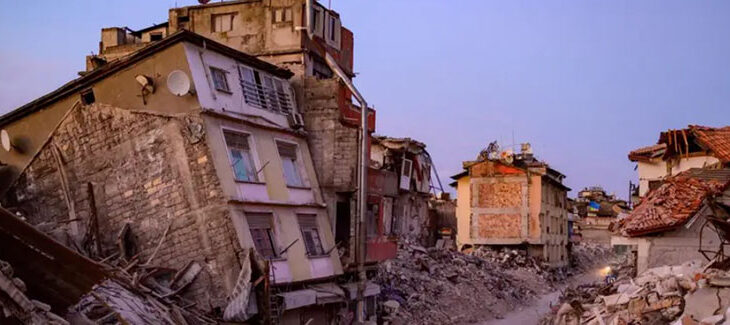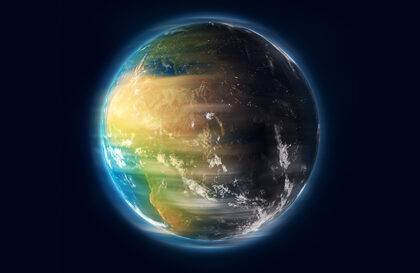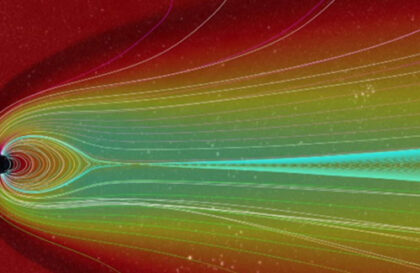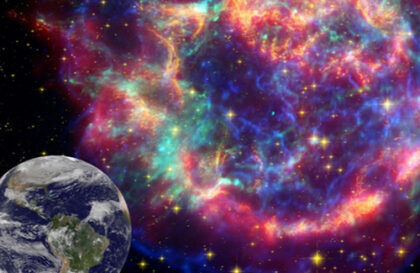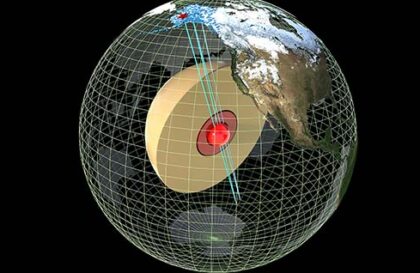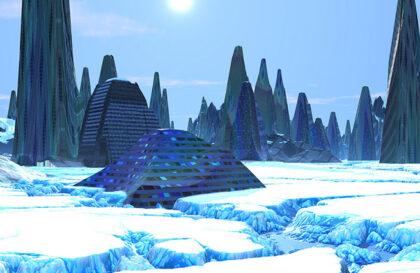The strongest earthquake
The strongest recorded earthquake occurred in Chile in 1960 – according to later estimates, Kanamori’s magnitude was 9.5, according to Richter – 9.
The waves of the resulting tsunami reached a height of 10 m. Strong tremors shook an area of 200 thousand km2. The main shock, measuring 9.5 on the Kanamori scale, and a series of aftershocks killed more than 5,700 people and left a hundred thousand more homeless. About 20% of Chile’s industrial potential was destroyed.
After the main shock, a series of weaker earthquakes swept across Chile to Tierra del Fuego. Continuous earthquakes, volcanic eruptions, and giant tsunamis have devastated more than 100,000 km2 of Andean countryside. The cities of Concepcion, Valdivia, Osorno, and Puerto Montt were almost destroyed
Damage sustained by a building in Concepción, located around 100 kilometres south of the epicenter. Credit: Wikipedia
Soon after the main shock, the tide began to ebb, giving way to a tsunami moving at about 800 km/h. It hit the Chilean coastline with waves about ten meters high and leveled the fishing villages of Anoud, Lebu, and Quelin. Many small coastal towns and settlements in Chile were completely destroyed. All buildings and roads in Puerto Saavedra and Puerto Montt were washed away, and some houses were thrown three kilometers inland.
Having flown away, the wave moved in the opposite direction and reached the shores of Japan. The tsunami killed 150 people here. Six thousand buildings were destroyed, and forty thousand were flooded. Fifteen hours after the earthquake, the tsunami reached Hilo Harbor, traveling 10,000 km at a speed of about 700 km/h.
Credit: Wikipedia
Then, the tsunami waves reached California, 9 thousand km from Chile. The number of victims was about 6 thousand, with the bulk dying from the tsunami. The damage in 1960 prices was about half a billion dollars.
Magnitude or Richter scale
The Richter scale contains conventional units (from 1 to 9.5) – magnitudes calculated from vibrations recorded by a seismograph.
An increase in magnitude by 1.0 corresponds to an increase in the amplitude of the oscillations by a factor of 10 and an increase in energy by approximately 32 times.
Credit: MCT
Duration and frequency of earthquakes
The duration of earthquakes varies, and the number of tremors can be enormous. For example, an earthquake that occurred on the island Lissa in the Mediterranean Sea lasted three years, and the total number of recorded tremors was 1870-1873—amounted to about 86 thousand (an average of 80 shocks daily).
In a year on Earth, approximately:
1 earthquake with a magnitude of 8.0 or higher;
10 – with a magnitude of 7.0-7.9;
100 – with a magnitude of 6.0-6.9;
1000 – with a magnitude of 5.0-5.9.
Why can’t the magnitude be greater than 9.5?
The rocks in the earth’s crust, regardless of type or composition, are too weak. 9.5 (on the Kanamori scale) is the maximum they can withstand while maintaining the tension of colliding with each other.
It is believed that earthquakes stronger than magnitude 9.5 on the Kanamori scale cannot occur on Earth. The rocks in the earth’s crust, regardless of type or composition, are too weak.
An earthquake requires storing a large amount of stress in the rocks along the fault plane. The fault plane should prevent the movement of rock masses until a large amount of energy in the form of stress accumulates in the rocks. The M9.5 energy level would require stress levels that exceed the strength of any rock known on Earth.
Calculations have established that the size of the earthquake source (the size of the area on which the rocks were displaced, which determines the earthquake’s strength and energy) with weak tremors barely perceptible by humans is measured in length and vertically by several meters. In earthquakes of medium strength, the size of the source reaches kilometers.
The sources of the most powerful, catastrophic earthquakes can be 500-1000 km long and go far inland. For the largest earthquake recorded on Earth (Chile, 1960), the focal size (∼ 1000 km × 100 km) is close to the maximum values known to scientists.
It is assumed that the Earth is not able (in the physical sense) to generate an earthquake more robust than the Chilean one.
How do earthquakes occur?
Tectonic plates float in a “sea” of mantle. Everything is calm as long as the friction force between them is greater than the tension energy. As one plate collides with another, the stress energy accumulates and exceeds the force of friction, and the plates begin to move along the fault, accompanied by earthquake tremors.
Credit: US Geological Survey (USGS)
In some cases, layers of earth located on the sides of a fault move toward each other. In others, the ground on one side of the fault sinks, forming faults. In places where they cross river beds, waterfalls appear. The vaults of underground caves are cracking and collapsing. After an earthquake, large areas of the earth sink and are filled with water. Earth tremors displace the upper, loose layers of soil from the slopes, forming landslides and landslides, and soil liquefaction can occur.
Most earthquake sources occur in the Earth’s crust at a depth of 30-40 km below the Earth’s surface.
According to scientific classification, according to the depth of occurrence, earthquakes are divided into three groups:
“normal” – 34-70 km,
“intermediate” – up to 300 km,
“deep-focus” – over 300 km.
The last group includes the earthquake on May 24, 2013, in the Sea of Okhotsk, when seismic waves reached many parts of Russia, including Moscow. The depth of this earthquake reached 600 km.
The Pacific Belt is the most active zone for earthquakes, which runs along almost the entire Pacific coast (approximately 90% of all Earthquakes).
What if we increase the magnitude?
The Richter scale is logarithmic. An earthquake with a magnitude just one higher releases 32 times more energy.
Let’s try to put some numbers into perspective:
Magnitude 4
Objects in the room rattle a little, and people feel vibration in certain places. The energy released is equivalent to the detonation of six tons of TNT.
Magnitude 6
Deals damage to buildings in the middle zone from the epicenter. It can be felt hundreds of kilometers away. Equivalent to ~6000 tons of TNT or a small nuclear explosion.
Credit: Wikipedia
Magnitude 8
At the city or provincial level, this is a major disaster. Equivalent to 6 million tons of TNT or a major nuclear explosion.
Magnitude 10
It will release energy corresponding to 6000 megatons of TNT. This is five times more than the nuclear arsenal accumulated in the world.
The relative energy of an earthquake of magnitude M10.0 will be approximately 5.6 times greater than the energy of the Chilean earthquake M9.5. Thus, if all other fault characteristics were the same, the rupture length of the M10 earthquake would be about 5600 km instead of 1000 km. The shaking would continue for up to 30 minutes.
Magnitude 12–13.
Comparable to the 10 km diameter Chicxulub asteroid impact, which caused a mass extinction event, including the dinosaurs, at the end of the Cretaceous period 66.5 million years ago.
Credit: Southwest Research Institute/Don Davis
Magnitude 15
The Theia Impact, which molten the Earth’s surface again, connected the two planets, and separated the Moon from the Earth, can be estimated at 14.8 on the Kanamori scale. And this is the maximum that the Earth can withstand. There is an assumption that the Pacific Ocean is the site of Theia’s impact.
Magnitude 19
Enough energy to completely blow planet Earth apart and vaporize it.
Magnitude 25
Enough energy to completely dismantle the Sun. A typical supernova explosion releases energy equivalent to approximately 1035 megatons of TNT.
Magnitude 28
Hypernova star. The biggest of the giant star explosions.
Magnitude 36
Mass energy of the Milky Way galaxy. In other words, if you put that much power in one place, you’d get a supermassive black hole with the mass of the Milky Way. This is an earthquake of the Universe.
Magnitude 44.
Mass energy of the entire visible Universe.
Magnitude 46.
A thousand times more mass than is currently observed in the Universe. More than enough to reverse the expansion of space and the Big Bang. Essentially, it turns the entire observable Universe into a black hole and singularity.
Magnitude 50
It’s a million times larger than the insane amount of magnitude 46.
How do you increase the magnitude of an earthquake?
Credit: CASE STUDIES / By keshav kunal
To increase the magnitude, you need to add energy. Add energy from outside.
For example, provoke the simultaneous eruption of all volcanoes in the Pacific belt.
An asteroid scenario or a planetary collision would work well.
Even a Needle at the speed of light will be something incredible.
Banner image: YASIN AKGUL/AFP/Getty Images
Image credit:
https://www.newscientist.com
https://en.wikipedia.org
https://en.wikipedia.org
https://tucson.com
https://www.sciencelearn.org.nz
https://en.wikipedia.org
https://phys.org
https://www.thestudykeys.com
